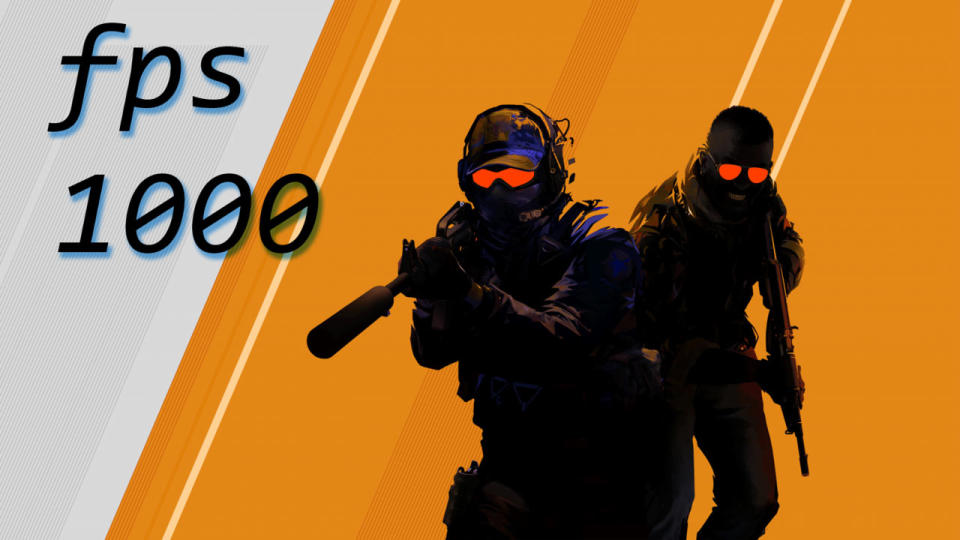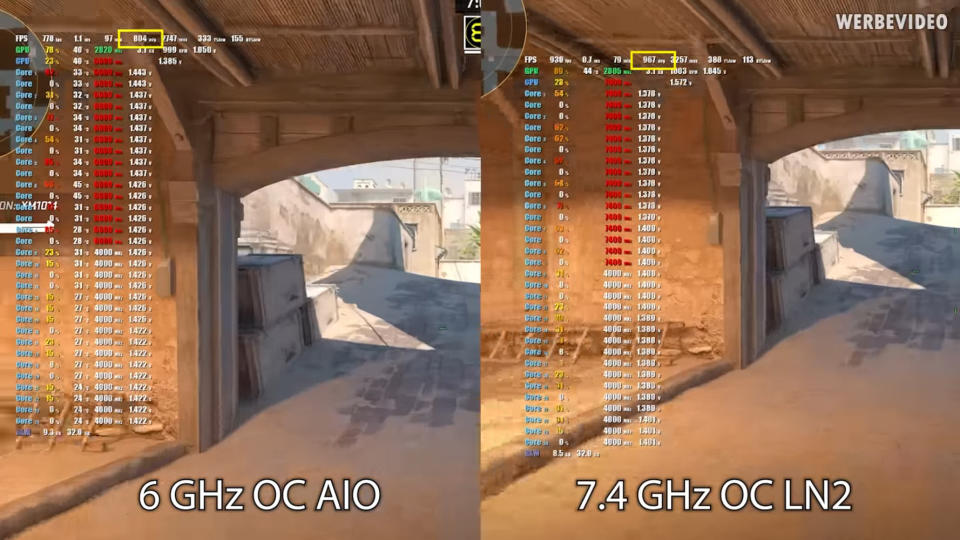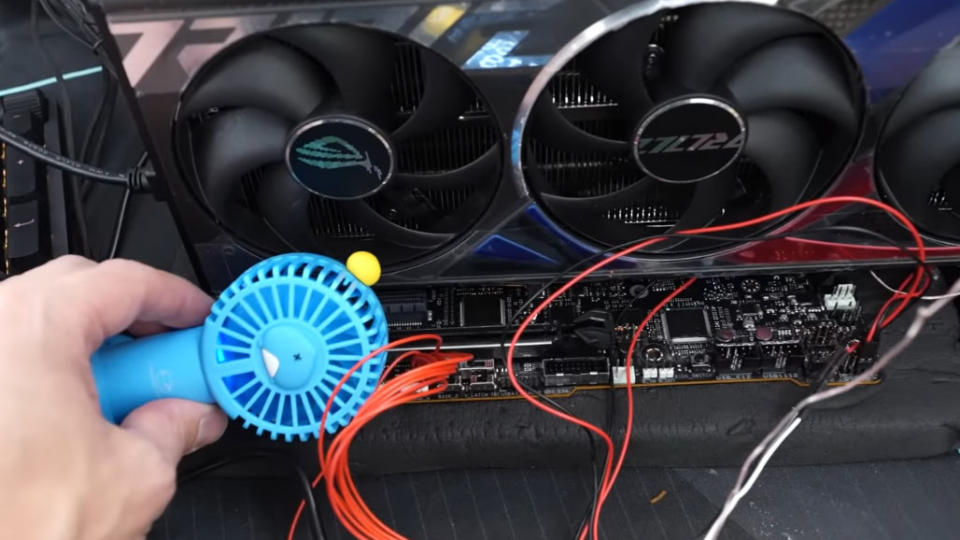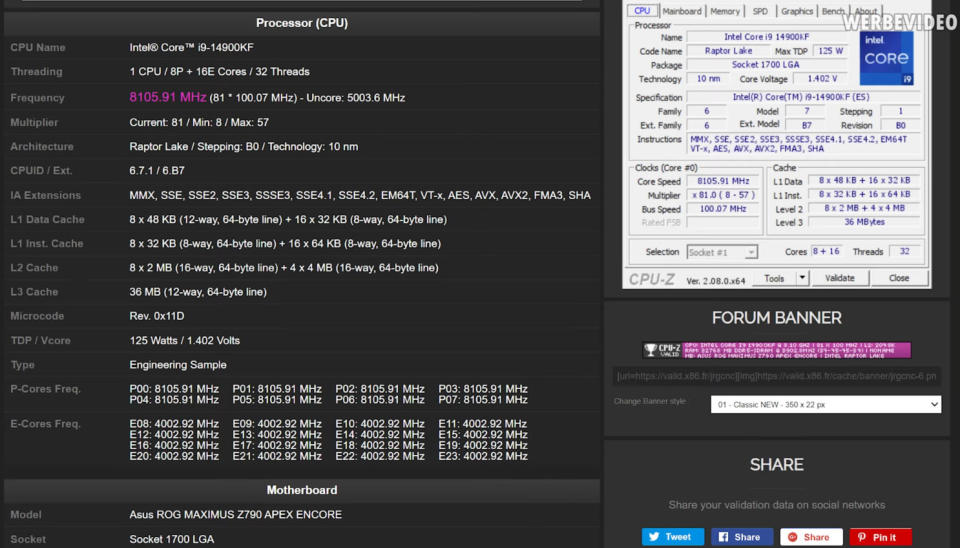Overclocker hits 1000+ fps in Counter Strike 2 - Intel 14900k CPU, RTX 4090 GPU, and liquid nitrogen deliver frame-ripping performance

Overclocking expert Der8auer has provided some guidance on how to achieve 1000 frames per second (fps) in Counter-Strike 2. He used a potent mix of one of the best CPUs and probably the most powerful consumer gaming GPU to achieve his lofty goal – as well as several liters of liquid nitrogen. However, it is important to note that he set himself some strict guidelines: the game must run at 1080p, no less, and CS2’s graphics settings must be realistic for a pro eSports gamer.
Counter-Strike 2 is a game that is very well known for benefiting from the fastest frame rates. However, we aren’t at the stage where 1000 fps with realistic pro eSports settings is required (or possible) in a competitive tournament… Der8auer conducted some research to find what kinds of settings eSports pros used in this game. While many graphics quality settings can indeed be pared back, he noted some finer points. For example, using high settings for shadows seemed to be one of the favored choices among CS2 devotees. Thus, Der8auer admitted that his fps figures could in theory be higher, but they would then be using unrealistic settings for pro CS2 gamers.
The PC components that were used for this 1000 fps CS2 gaming session were as follows:
Intel Core i9-14900K – retail sample, claimed to be ‘average’
Asus ROG Maximus Z790 Apex Encore motherboard – which has an LN2 mode in the BIOS
LN2 coolant pot
2 liters of liquid nitrogen
Elmore OC panel monitor
Nvidia GeForce RTX 4090 graphics card
To provide a performance baseline, Der8auer first ran the above system with an AIO liquid cooler and disabled e-cores, achieving 6 GHz. CS2 ran at up to about 800 fps using this overclocking setting.
Now the LN2 overclocking tests could begin. With temperatures down to -150 degrees Celsius, Der8auer found his 14900K processor could run at a stable 7.4 GHz (P-cores only). So, CS2 was fired up (with OBS screen recorder software) and the performance result was considerably better. The LN2 OC system achieved 1080p eSports settings CS2 gaming performance of about 950 fps on average.

Somewhat disappointed with his 14900K sample, the overclocking expert borrowed a better-binned chip that was available at the Asus OC lab. We then saw Der8auer progress, with some help from overclocker Safedisk, to 7.5 GHz, with various other refinements to memory timings. Subsequently, he achieved his goal, with CS2 performance remaining consistently above 1000 fps.
Pushing to 7.8 GHz, no real noticeable fps increase was observed, so it was thought that the mighty GPU had become the limiting factor. He didn’t want to lower graphics settings for more fps, as that would defeat the point of the video. Remember, he wanted realistic competitive eSports 1080p settings and 1000 fps or better.


Some further OC exploration with the binned 14900K CPU was surprisingly held back due to the system’s PCIe Gen5 SSD overheating. A sample with no heatsink had been installed, but after pointing a cutesy hand fan the SSD system stability returned and Der8auer managed to achieve a stable all-core 8.1 GHz overclock (see gallery above).
Der8auer recalls that as he was working on his 14900K overclocking and CS2 gaming video in Taiwan, he wasn’t alone. Also in attendance, in the Asus OC labs, were the aforementioned Safedisk, Elmor, Shamino, and Massman. This heavyweight team was pushing another 14900K to the max, this time using liquid helium. They tortured their sample at nearly -250 degrees Celsius and reached beyond 9 GHz on a single P-core. Der8auer didn’t think it was unrealistic to see an OC (of the same chip) over 10 GHz in the future.
In October we reported upon a Core i9-14900K setting a new record in CS2 with an incredible 1310 fps. This was achieved with the processor running between 7.5 GHz and 8 GHz on Gigabyte's Z790 Aorus Tachyon X motherboard. We aren’t sure what graphics / quality settings were used during that attempt.
